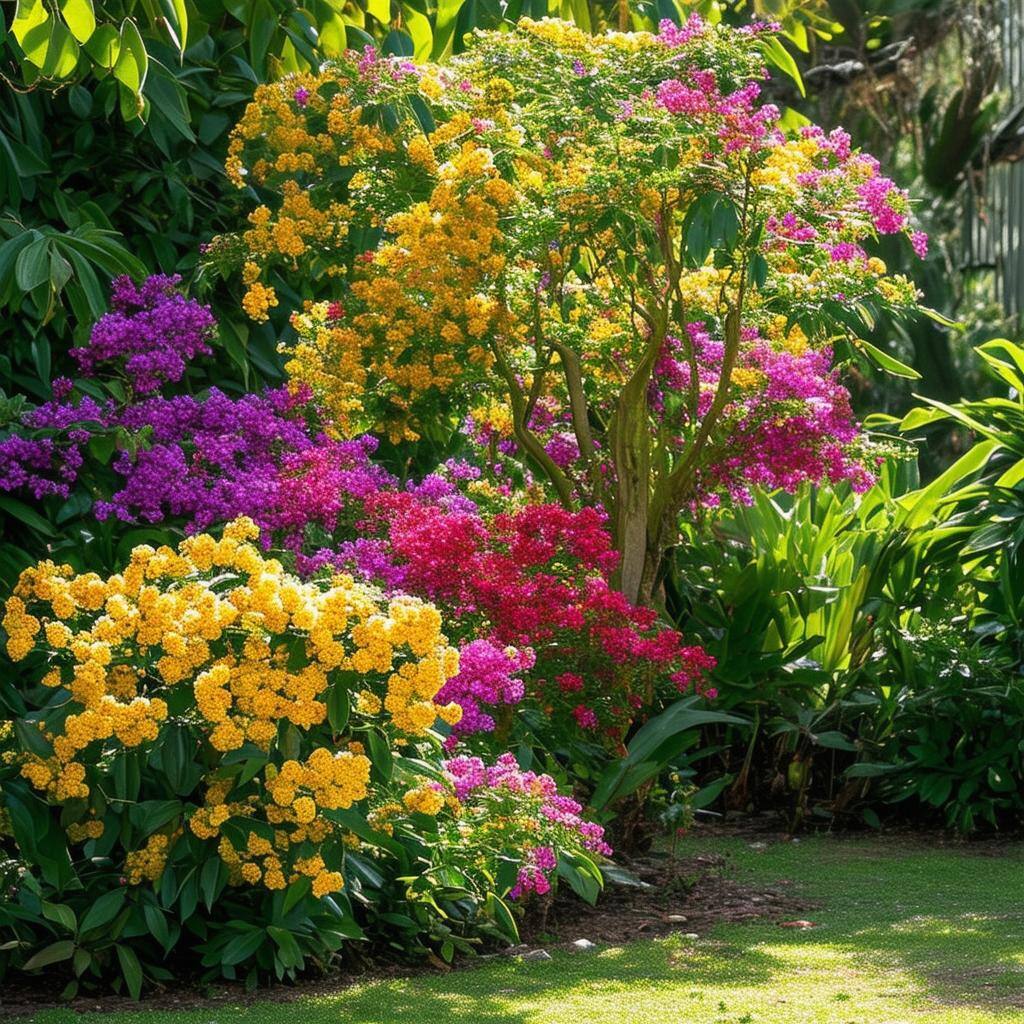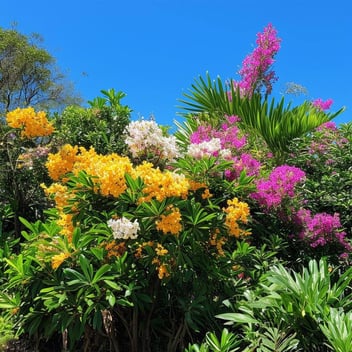Protecting Kids and Pets from Toxic Plants in SEQ Gardens
Introduction
Gardens in South East Queensland (SEQ) are celebrated for their lush landscapes and diverse plant life. However, amidst this beauty lurk certain plants that pose significant risks to children and pets. Understanding and identifying these toxic plants are crucial steps toward ensuring a safe outdoor environment for your loved ones.
Common Toxic Plants in SEQ Gardens
Identifying hazardous flora in your garden is essential for preventing accidental poisonings. Here are some common toxic plants found in SEQ gardens:
Oleander (Nerium oleander)
Oleander is a popular ornamental shrub known for its beautiful flowers ranging from white to pink and red. Despite its aesthetic appeal, all parts of the plant are highly toxic, containing compounds that can cause severe cardiac and gastrointestinal issues if ingested. Even inhaling smoke from burning oleander can be hazardous.
Angel's Trumpet (Brugmansia spp.)
Angel's Trumpet captivates gardeners with its large, pendulous flowers and sweet fragrance. However, this plant contains toxic alkaloids that can lead to hallucinations, paralysis, and other serious health issues upon ingestion. Its alluring appearance belies the dangers it harbors.
Lantana (Lantana camara)
Lantana's colorful clusters of flowers may brighten up a garden, but this plant is toxic to both humans and animals. Ingestion can cause symptoms ranging from mild stomach discomfort to severe poisoning, including liver damage in animals. Its invasive nature further complicates its presence in local ecosystems.
Dumb Cane (Dieffenbachia spp.)
Often kept as an indoor plant, Dumb Cane features large, attractive leaves. However, it contains calcium oxalate crystals that can cause intense irritation and swelling of the mouth and throat if chewed, potentially leading to difficulty breathing. Its accessibility makes it a hidden hazard in many homes.
Grevillea 'Robyn Gordon' (Grevillea spp.)
This native Australian plant is admired for its striking red flowers. However, it contains compounds that can cause allergic contact dermatitis in sensitive individuals. Direct contact with the plant may result in skin irritation or rashes.
Symptoms of Plant Poisoning in Children and Pets
Recognizing the signs of plant poisoning is vital for prompt treatment. Symptoms may include:
-
Gastrointestinal distress: Nausea, vomiting, diarrhea, and abdominal pain.
-
Cardiovascular issues: Irregular heartbeat, dizziness, and in severe cases, cardiac arrest.
-
Neurological symptoms: Confusion, hallucinations, weakness, and seizures.
-
Dermal reactions: Skin irritation, rashes, and swelling upon contact with certain plant saps.
Immediate medical attention is crucial if any of these symptoms occur following exposure to a toxic plant.
Preventative Measures
To ensure a safe garden environment:
-
Identify and label: Familiarize yourself with the plants in your garden and label any that are known to be toxic.
-
Restrict access: Keep children and pets away from hazardous plants by using fencing or placing plants out of reach.
-
Educate household members: Inform family members about the dangers of certain plants and the importance of not ingesting unknown flora.
-
Regular maintenance: Remove or relocate toxic plants, especially if they pose a high risk to your household.
Emergency Response
In case of exposure to a toxic plant:
-
For ingestion: Do not induce vomiting. Rinse the mouth with water and seek immediate medical attention. Contact the Queensland Poisons Information Centre at 13 11 26 for guidance.
-
For skin contact: Gently remove any plant material from the skin and wash the affected area thoroughly with soap and water. If a rash or irritation develops, seek medical advice.
-
For eye exposure: Rinse the eyes immediately with lukewarm water for at least 15 minutes. After rinsing, seek medical attention promptly.
In all cases, having a sample or a clear photograph of the plant involved can be invaluable for healthcare providers to determine the appropriate course of treatment.
Child and Pet-Friendly Plant Alternatives
Creating a safe and vibrant garden in South East Queensland (SEQ) is achievable by selecting non-toxic plants that thrive in the local climate. Here are some excellent choices:
-
Grevillea (Grevillea spp.)
- Description: Grevilleas are versatile shrubs known for their unique, spider-like flowers in various colors, including red, pink, and yellow. They are drought-tolerant and attract native birds.
- Growth Conditions: Plant in well-drained soil with full sun exposure. Once established, they require minimal watering.
- Size: Depending on the variety, they can range from low ground covers to small trees.
-
Swamp Lily (Crinum pedunculatum)
- Description: Also known as the River Lily, this plant features large, strap-like leaves and produces fragrant white flowers. It adds a lush, tropical feel to gardens.
- Growth Conditions: Thrives in wet, shaded areas but can tolerate full sun. Ideal for planting near water features.
- Size: Grows up to 1.5 meters tall and 2 meters wide.
-
Native Violet (Viola hederacea)
- Description: This groundcover produces delicate purple and white flowers, providing a safe and attractive option for garden beds.
- Growth Conditions: Prefers shaded areas with moist, well-drained soil. It's ideal for underplanting or as a lawn alternative in low-traffic areas.
- Size: Forms a dense mat up to 10 cm high.
-
Bottlebrush (Callistemon spp.)
- Description: Known for their vibrant red, pink, or white brush-like flowers, these shrubs are not only safe but also attract local wildlife, including birds and beneficial insects.
- Growth Conditions: Adaptable to various soil types, they prefer full sun and are drought-tolerant once established.
- Size: Varies by species; dwarf varieties can be 1 meter tall, while others may reach up to 4 meters.
-
Bluebell (Wahlenbergia stricta)
- Description: Featuring charming blue flowers, this native perennial adds color to your garden without posing a risk to children or pets.
- Growth Conditions: Prefers full sun to partial shade and well-drained soil. It's suitable for rockeries and cottage gardens.
- Size: Typically grows up to 50 cm tall.
-
Kangaroo Paw (Anigozanthos spp.)
- Description: With their unique, velvety flowers and variety of colors, these plants are both eye-catching and non-toxic.
- Growth Conditions: Thrives in well-drained soil and full sun. Requires minimal watering once established.
- Size: Ranges from 0.5 to 1.5 meters in height, depending on the variety.
-
Lilly Pilly (Syzygium spp.)
- Description: These versatile shrubs produce edible berries and can be used as hedges or ornamental plants, offering both safety and functionality.
- Growth Conditions: Prefers well-drained soil and can tolerate full sun to partial shade. Regular pruning helps maintain desired shape and size.
- Size: Can grow up to 3-5 meters, but dwarf varieties are available for smaller gardens.
Incorporating these plants not only enhances the safety of your garden but also supports local ecosystems by providing habitat and food sources for native fauna. By choosing non-toxic, native species, you create a harmonious and secure environment for children, pets, and wildlife alike.
Conclusion
Maintaining a safe garden in South East Queensland requires vigilance and informed choices. By recognizing and managing toxic plants, implementing preventative measures, and opting for child and pet-friendly alternatives, you can cultivate a beautiful and secure environment for all to enjoy. Regularly educating yourself and others about garden safety ensures that your outdoor space remains a sanctuary of tranquility and well-being.




